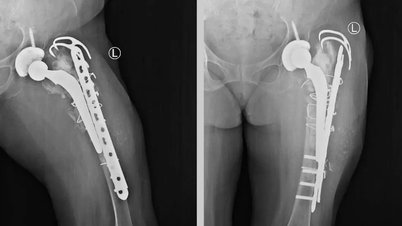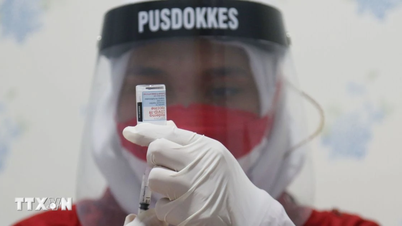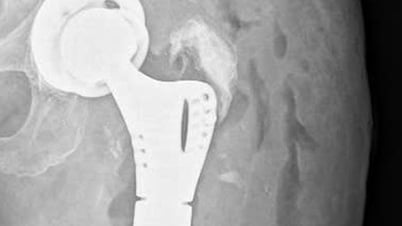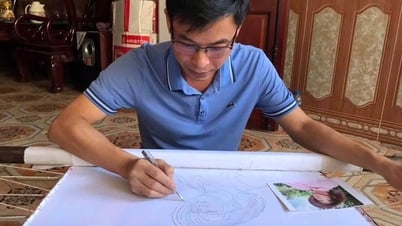Diabetic foot complications occur silently and very early, when there are clear signs, they are often already severe.
The World Health Organization (WHO) reports that every 30 seconds, one more diabetic person in the world loses a leg due to complications of diabetes. The Ministry of Health says that Vietnam has about 7 million people with diabetes, and currently more than 55% of cases have complications.
 |
| Diabetic foot complications occur silently and very early, when there are clear signs, they are often already severe. |
However, patients' level of concern about foot complications is still low, leading to more serious complications such as infection, deep ulcers, necrosis, and limb amputation.
Complications of diabetes such as cardiovascular disease, kidney failure, blindness, stroke, etc. are of concern to many patients. However, many diabetics ignore or pay little attention to complications of diabetic foot or diabetic foot infection.
Statistics from the Ministry of Health show that about 15% - 20% of diabetics have foot complications. Social reality is that many diabetics have reduced quality of life due to amputation, and patients have shortened their lives due to death due to amputation. Therefore, patients need to raise awareness about diabetic foot complications.
There are many factors in diabetics that lead to foot complications such as: complications of large and small blood vessels due to blockage, narrowing, and atherosclerosis; neurological complications; foot deformities due to damage to blood vessels and nerves. The above factors combined make diabetics susceptible to foot infections, slow-healing ulcers, etc.
Due to not recognizing diabetes complications early and not paying proper attention to complications, many patients are still subjective in foot care, leading to mistakes that affect their health.
Diabetic foot complications develop silently and occur early. Patients should be examined and screened for diabetic foot complications as soon as the disease is detected.
Hyperglycemia combined with other risk factors such as smoking, hyperlipidemia, dyslipidemia, hypertension, and obesity are risk factors for vascular damage and peripheral nerve damage.
From vascular complications, neurological complications can lead to foot deformities in diabetic patients. The process of complications occurs silently, so patients can miss early signs. By the time they feel obvious symptoms such as pain in the heel when walking, numbness, dropping a shoe without knowing... then it is already in a severe stage.
Due to the complex nature of the disease, diabetic patients are susceptible to many different types of wounds. Diabetic foot ulcers caused by trauma such as accidents, burns, radiation, heat, thorns, nails or glass fragments are the main causes of diabetic wounds.
Ulcers due to complications of nerves: Usually appearing in the sole of the foot, ulcers arise due to peripheral nerve complications, loss of sensation, increased pressure on the bone tissue of the foot for a long time, causing deformation of the bone structure of the foot. These ulcers often have calluses, fibrous tissue, and hyperkeratotic tissue.
Ischemic ulcers: Due to reduced blood supply to the skin and subcutaneous tissue of the foot, often appearing on the distal part of the instep or toes, are purple or turn black when necrotic.
Arterial ulcer: Due to reduced blood supply to the leg, the wound area is pale, the skin surface is cold, swollen, shiny, painful, and the wound is necrotic or gangrenous.
Venous ulcers: Usually located on the lower leg from below the knee to the ankle, typically around the ankle, with irregular edges, edema and varicose veins.
Ulcers of mixed origin: Bullae, furuncles, cellulitis.
Diabetic blisters: Occur in about 39.7% of people with diabetes. The cause of blisters is not clearly determined. The blisters often develop after minor injuries or exposure to ultraviolet rays.
Dr. Lam Van Hoang, Head of the Department of Endocrinology - Diabetes, Tam Anh General Hospital, Ho Chi Minh City, advises diabetics to pay attention to foot care as follows: clean feet daily, dry feet after washing feet. During foot washing, you should carefully look at your feet for any abnormalities or injuries.
Patients should absolutely not go barefoot to avoid stepping on sharp objects that can injure their feet. Patients should choose shoes that fit well, not too loose or too tight, made of soft, comfortable material, and should choose shoes in the afternoon. Early examination and screening for foot complications play an important role in preventing diabetic foot.
Source: https://baodautu.vn/bien-chung-ban-chan-o-benh-nhan-tieu-duong-d219944.html



![[Photo] General Secretary To Lam meets with the Group of Young National Assembly Deputies](https://vphoto.vietnam.vn/thumb/1200x675/vietnam/resource/IMAGE/2025/6/24/618b5c3b8c92431686f2217f61dbf4f6)
![[Photo] Close-up of modernized Thu Thiem, connecting new life with District 1](https://vphoto.vietnam.vn/thumb/1200x675/vietnam/resource/IMAGE/2025/6/24/d360fb27c6924b0087bf4f288c24b2f2)

![[Photo] The 9th Party Congress of the National Political Publishing House Truth](https://vphoto.vietnam.vn/thumb/1200x675/vietnam/resource/IMAGE/2025/6/24/ade0561f18954dd1a6a491bdadfa84f1)




































































































Comment (0)